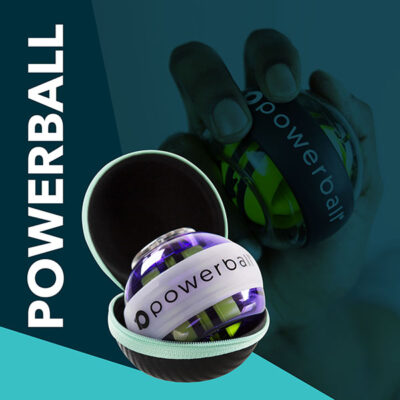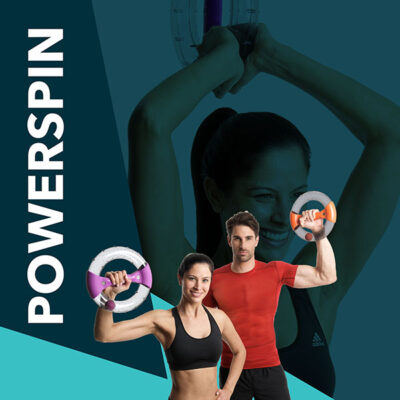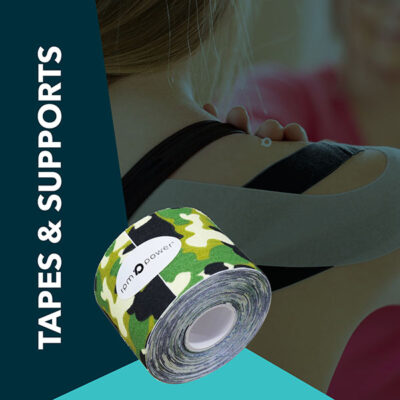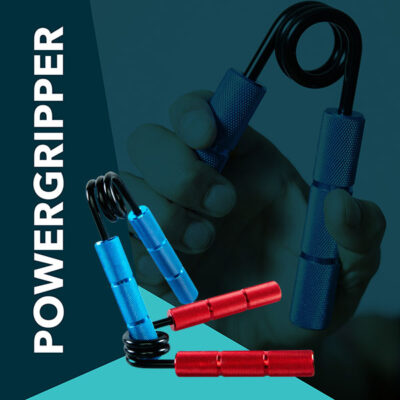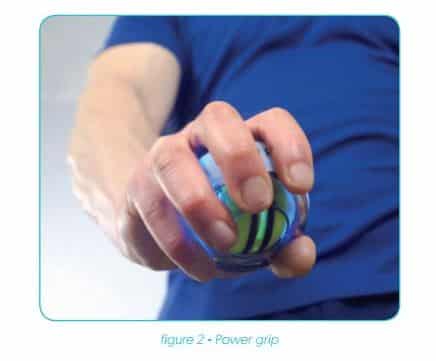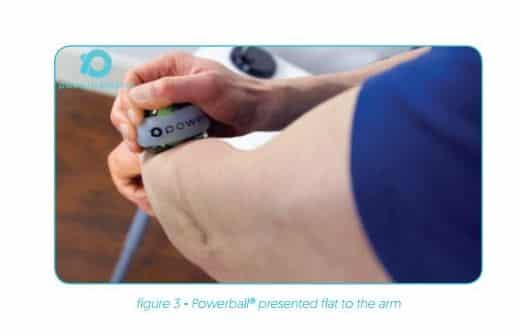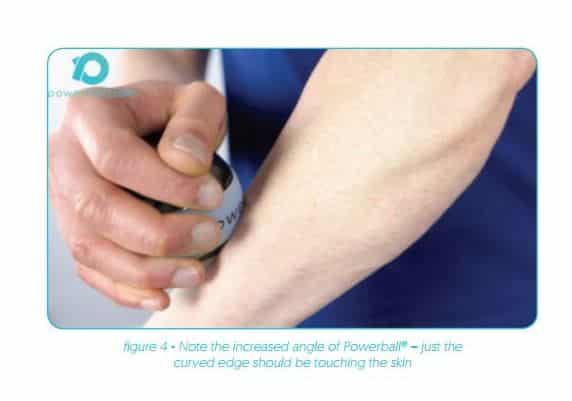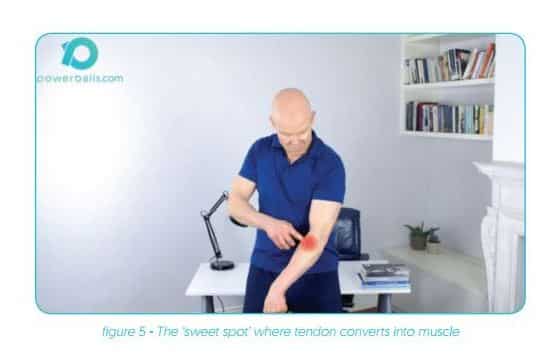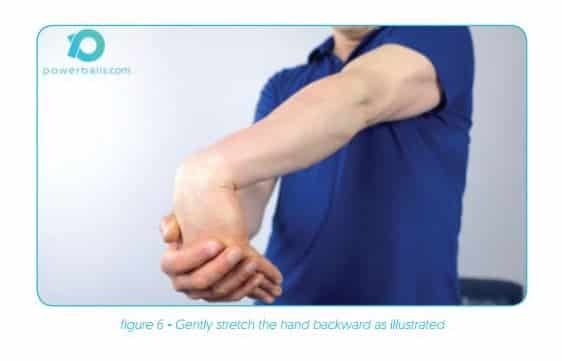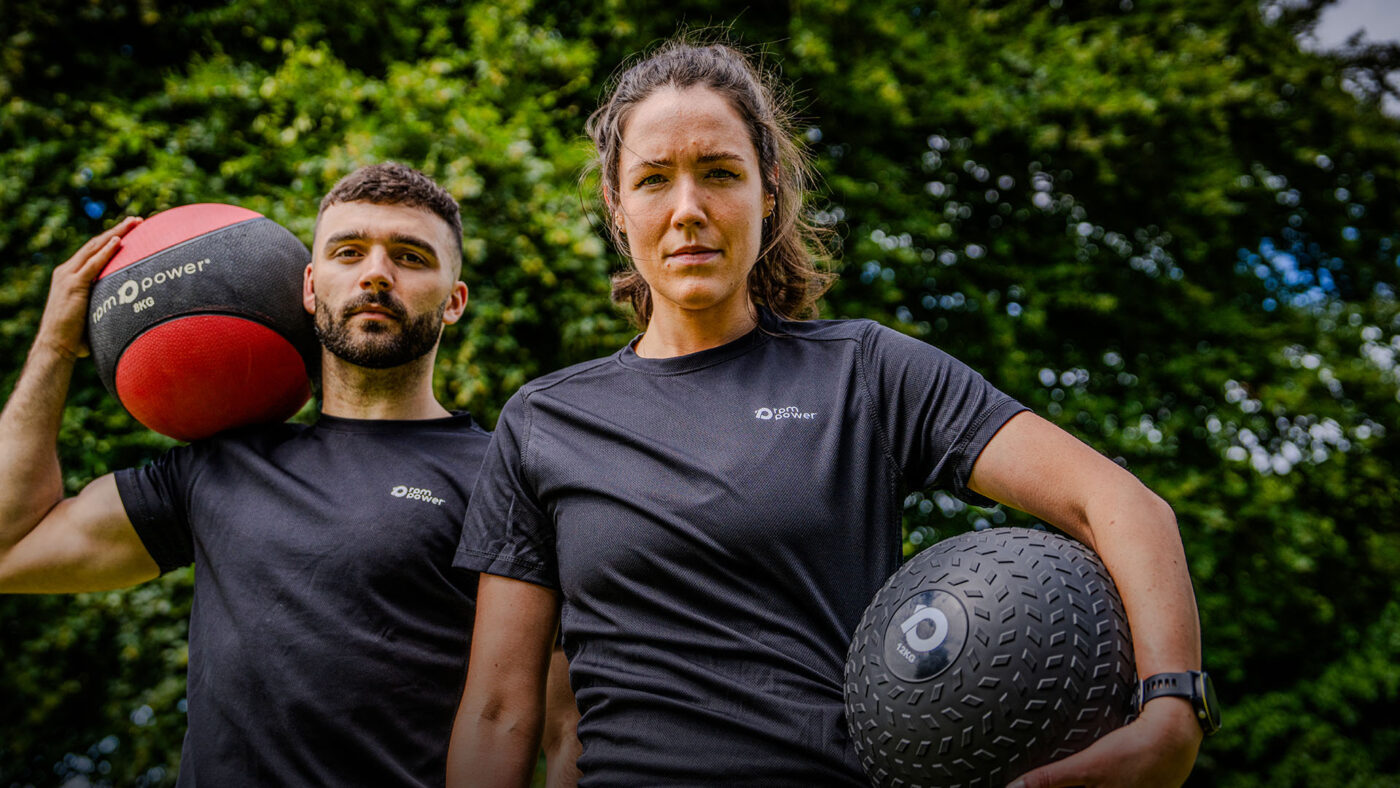Uncategorized
3 Types of Tennis Elbow Exercise Treatments
Tennis Elbow Exercise/ Lateral Epicondylitis Treatment and Rehabilitation
Tennis Elbow Exercise Made Simple with Powerball
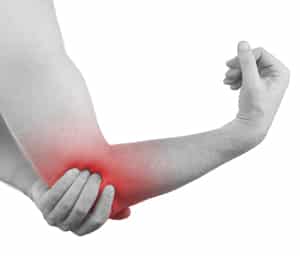
Finding the correct tennis elbow exercise programme can be a difficult task. Many people have visited physical therapists and doctors to no avail. Luckily, there is Powerball – the world’s number one exercise gyroscope for strengthening and rehabilitation.
In this article, we will show you two tennis elbow exercise treatments that you can do alongside your regular rehabilitation sessions with Powerball.
“Recover fast and get back to enjoying a healthy, active and pain-free lifestyle in no time with Powerball.”
What is Tennis Elbow?
Tennis elbow (lateral epicondylitis) is a common type of RSI (repetitive strain injury) that affects the lateral tendons in the elbow. Tennis elbow affects up to 3% of the population and is an overuse injury, generally brought on by activities that involve constant repetitive movements of the arm, elbow and wrist.
Despite the name, tennis elbow more commonly affects office employees, workers involved in manual labour, musicians and other sportspeople. The concentric (shortening of the muscle) and eccentric (lengthening of the muscle) movements involved in these activities cause the tendons in the elbow to become irritated and inflamed over time. This leads to pain when the elbow joint is bent or straightened.
In some cases, tennis elbow can become so severe as to affect your ability to carry out every day activities. For this reason, it is important to take control over your recovery by practicing tennis elbow exercise treatments and strengthening techniques.

Tennis Elbow Exercise Treatments
There are three types tennis elbow exercise treatments that people suffering from the condition can carry out.
1. Eccentric exercises
2. Concentric exercises
3. Isometric exercises
All three types of exercises are proven to be highly beneficial for tennis elbow sufferers.
1. Eccentric tennis elbow exercise treatment: water bottle exercise
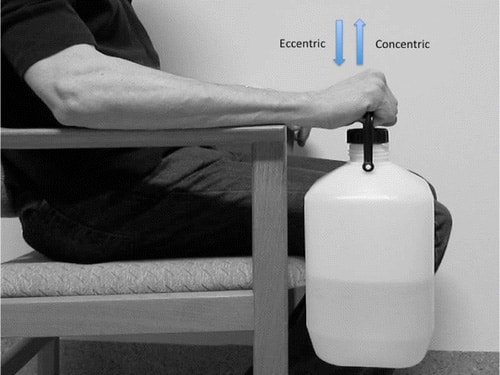
Take a large bottle and fill it with water. It is recommended that stronger people (those used to regular strength training) start with 2 litres (2kg), while people with less experience with weight lifting start with 1 litre (1kg). As you regain strength in your elbow, you can gradually increase the weight of the water bottle.
Supporting your arm on the armrest of a chair, slowly bend your wrist downwards and upwards 15 times while holding the water bottle. Continue this exercise 3 times daily (15 reps x 3).
This tennis elbow exercise is a basic static exercise which will help lengthen, elongate and stretch the muscles in your arms, while also building strength.
This same exercise can also be carried out by raising the bottle upwards in concentric movements however, studies have found this to be less effective.
2. Concentric tennis elbow exercise treatment: dumbbell exercise
Start with a 1- or 2lb dumbbell depending on your level of strength.
Sit on a chair next to a table that has an edge or an overhang.
Bend the elbow to 90 degrees and grip the dumbbell with your palm facing the floor. Slowly lower the weight with your wrist, then lift it back up towards the ceiling. Beware that this exercise can be painful. You should always take care not to over-exert yourself, as you risk worsening your condition.

Repeat these repetitions with the weight 10 times or until:
a) it becomes too painful
b) you don’t have the strength to continue

Take a few minutes of rest and then fully straighten your elbow, so that it is lying flat across the table (you might have to lean over the table or crouch next to it).
Slowly lower and raise the weight 10 times or until it is too painful/you don’t have the strength to continue. (Again, remember to never overexert yourself as you risk worsening your injury.)
Once 10 repetitions have become easy to do and you no longer feel any pain, increase the weight of the dumbbell by 1- or 2lb.
Any pain should start to ease around 4-6 weeks. Continue these exercises once a day, 7 days a week for about 3 months. If you do not feel any improvement after 6 weeks, you should consider alternative treatments.
3. Isometric tennis elbow exercise treatment: Powerball exercise
Isometric exercise is extremely effective for the treatment of tennis elbow. This is due to the non-impact nature of isometric training. Eccentric and concentric tennis elbow exercise treatments can be very painful, especially for chronic sufferers. Isometric exercise on the other hand is 100% non-impact, meaning it does not place any additional strain or pressure on already-damaged tendons and muscles and is thus, 100% pain-free.
Why is Isometric Exercise So Effective?
Concentric and eccentric exercises involve the shortening and lengthening of your muscles. Your tendons connect muscle to bone and therefore, work very hard when you carry out a concentric/eccentric exercise, such as bicep curls, for example. Isometric exercise is different. It does not involve the shortening/lengthening of muscles and so puts no pressure on inflamed or painful tendons in the elbow.
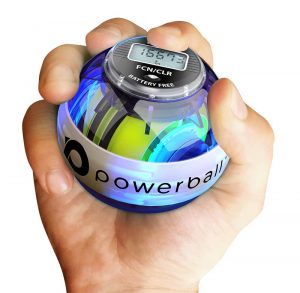
Powerball is a simple, handheld gyroscope and one of the world’s best isometric exercisers. For this reason it is a highly-effective exercise device for the rehabilitation of tennis elbow and is recommended by physicians across the globe for a fast, long-term recovery.
Why is Powerball So Effective for Tennis Elbow Exercise Treatment?
Powerball generates isometric resistance as you spin it. The faster you spin Powerball, the more isometric resistance it creates.
How fast or slow you spin Powerball depends on how quickly you turn your wrists. And whether you spin it at slow or fast speeds, you will immediately begin to feel Powerball’s healing isometric resistance working its way along your entire arm, soothing pain in your elbow and combating the symptoms of tennis elbow. (It is recommended that you start with a low level of resistance at the beginning of your recovery, and gradually increase speed as you grow stronger.)
Scientifically Proven – Powerball for Tennis Elbow Treatment
In the last few years, two university research studies have been published, each demonstrating the benefits of Powerball exercise on tennis elbow sufferers. Both research studies test the results of Powerball use on a group of participants over a 4 and 8 week period respectively and show how exercising with this powerful device can effectively rehabilitate and treat this condition.
You can read more about the results of these studies in our blog post here, or on the respective journal websites:
The Journal of Bodywork and Movement Therapies – Powerball Study 1
Physical Therapy Rehabilitation Science – Powerball Study 2
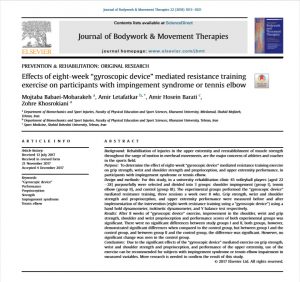
How Does Powerball’s Isometric Resistance Rehabilitate Tennis Elbow?
Powerball offers a myriad of benefits to anyone that spins it, but probably the best and most simple reason to exercise with Powerball is the fact that it does not put any strain on damaged tendons or muscles (it is fully isometric). 80-85% of people will, in fact, heal themselves of tennis elbow without medical intervention – it just takes a bit of time. Spinning Powerball simply speeds up this process. There’s no trick to it. Just spin Powerball for as little as 3 minutes a day to see a significant cut in recovery times.

But Really, How Exactly Does Powerball Speed Up Recovery Times?
1. By Boosting Circulation
Powerball’s isometric resistance massively increases circulation right throughout the entire upper limb from finger tip to shoulder. This happens because the resistance Powerball generates while spinning pushes firmly against your efforts to spin it. Even at low spin speeds, circulation is increased massively. This boost in circulation brings oxygen and nutrient-rich blood to injured and sore tendons in the elbow. Here, these nutrients act fast to relieve pain and repair any damage or tears in the tendon tissue, supercharging the healing process.
2. By Reducing Stiffness
Exercising with Powerball increases the production of synovial fluid, which lubricates the elbow joint. This allows the joint to move more freely and affords you better joint circumduction (range of motion). Reduce stiffness, increase flexibility – it’s as simple as picking up a Powerball.

3. By Strengthening As You Recover
Powerball is a world-class strengthening device used by millions of sportspeople to build strength and endurance in their upper-body limbs. All of the muscles in your forearm become engaged as Powerball’s isometric resistance pushes back against your efforts to spin it. This in turn, effectively trains your muscles and tendons, strengthening them as they recover. This active combination of strengthening and rehabilitation is the secret to Powerball, as it results in short recovery times and long-lasting tennis elbow rehabilitation.
4. By Preventing Muscle Wastage
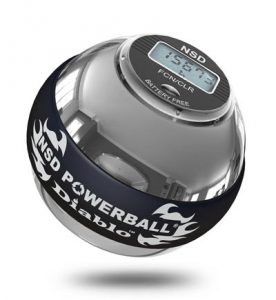
If you experience pain when you try to move or bend your elbow joint, then you will likely try to avoid using the elbow at all. However, the underuse of a joint like this will only result in more problems – one of these being muscle wastage (atrophy). Powerball effectively prevents atrophy by engaging your muscles as you recover.
Maintaining joint health and muscle mass as you rehabilitate tennis elbow has never been easier. Best of all, because isometric resistance is pain-free, you can enjoy the benefits of strengthening, without ever feeling the pain of overexertion.
Tennis elbow exercise treatments +
IceUse an ice pack to help reduce any inflammation in the elbow.
RestTake a break from activities that may possibly be causing your RSI. Continuing to practice such activities can only serve to worsen your tennis elbow.
MassageVisit a physio if possible, however self-massage is also sufficient. Tennis elbow can cause tearing of the forearm muscles (supinators & pronators), which may need deep tissue massage to resolve.
Physio-Designed Tennis Elbow Exercise Treatment Programmes
Here at Powerball, we’ve worked alongside physiotherapists and sports injury professionals to design a comprehensive rehabilitation programme with your recovery in mind. You can view and download the full tennis elbow exercise programme here.
Alternatively, you can watch the video below for a step-by-step guide to tennis elbow exercise. A full list of exercise videos can be found on our videos page.
VIDEOSFollowing this short programme with your Powerball for just 2-3 times per week will greatly assist in reversing the symptoms of tennis elbow. This is achieved through stimulating significantly-improved blood flow into the arm, stretching out and lengthening the forearm extensor muscle. This takes pressure off the connecting tendon easing the pain. All of which helps reduce inflammation in the tendon itself and increases overall range of movement at the elbow joint. Relief will be immediate. You can check out our tennis elbow page here for more information.
 Step 1 – To begin
Step 1 – To begin
Grip Powerball firmly between thumb and four digits, making sure Powerball is seated securely in the palm of the hand (see figure 2).
Start your Powerball in the usual manner and accelerate up to a comfortable spin speed. If you don’t know how, check out the ‘Getting Started’ page on powerballs.com website for videos and instructions. It is very important that you spin only with your wrist and not the arm – rotating clockwise or anticlockwise as preferred.
Spin speed is determined by your personal strength and fitness level as well as the severity of your condition. The purpose here is not to strengthen, but to loosen out and warm up the muscle tissue by bringing about increased blood flow in the limb. Therefore, rhythmic, slower spins of 2-3 minutes in duration (or longer if you prefer) are preferable to short, faster spinning for this specific program.
Faster spinning produces more resistance requiring the wrist flexor and extensor muscles to work harder while gripping. This is useful for the purposes of strengthening healthy muscle tissue but not beneficial in this instance where there is likely to be a
on accumulation of scar tissue and inflammation. Excess resistance is, therefore, to be avoided during this rehabilitation phase, thus slower spinning is preferable.
Note: It is recommended that you wear a light, skin-tight garment to help reduce possible friction on the skin during the following steps.
Step 2 – Tennis elbow exercise treatment: pre-massage warm-up processOnce the entire forearm has been sufficiently warmed up in this way, stop the spinning rotor and place Powerball® into your opposite hand, gripping it firmly.
Using ONLY the FLAT base of your Powerball®, begin to slide it up and down the forearm (as illustrated in figure 3). Use firm, fluid strokes from wrist to elbow, applying gentle downward pressure of the smooth plastic shell surface into the muscle.
You may do this as quickly or slowly as you prefer; your objective here is to warm up and loosen out a tight extensor muscle. The speed/pressure of the strokes used will always depend on the severity of your own particular RSI condition and tolerance levels.
Deep tissue/self-massage from wrist to elbow helps reduce extensor muscle tension by breaking down adhesions and surface knots in the actual muscle fibre. Blood flow will have been significantly enhanced during the pre-massage process above and you should now find that the muscle is in a far more pliable, relaxed state and is exerting considerably less pressure on the connecting tendon at the elbow.
Ideally, you would use a professional for some deep tissue massage or use a product that replicates a physio or massage therapist like our own Powerball Deep Tissue Massager.
However, you can also use Powerball and elevate it to 45 degrees so that the curved edge of the shell is the only part in contact with the forearm (figure 4).
Beginning at the wrist, slowly move Powerball up along the forearm toward the elbow. Press down firmly into the belly of the muscle as you go. Imagine that you’re trying to lengthen the actual muscle, pressing deeper into the tissue with each stroke.
NOTE: Take care AT ALL TIMES to avoid working directly over the tendon itself or any point in the muscle that may already be inflamed. Sore tendon areas will be far more sensitive to pressure than surrounding muscle tissue. If actual discomfort is experienced, however, simply reduce downward pressure significantly or stop the treatment entirely and allow the area to recover before continuing.
As you proceed, you’ll also likely encounter areas in the muscle that may require more localised pressure. These are trigger points or contraction knots in the muscle fibers. Through breaking these down by applying firmer pressure with Powerball’s shell can bring particular relief to the tennis elbow condition.
In many cases, the highest relief will be felt by applying suitable pressure to the muscle at a point immediately below where it attaches to the tendon (figure 5).
It is recommended that you finish each tennis elbow treatment with a light 30-60 second stretching of the wrist area as illustrated in figure 5. This will help to further lengthen out the muscle, taking, even more, pressure off the elbow tendons.
Continue the massage treatment for 3-5 minutes, stretching the arm out periodically in between. If you’re applying sufficient pressure in each stroke, you’ll notice an immediate increase in pain-free range of motion at the elbow joint as tension and pressure in both the muscle and tendon diminish.
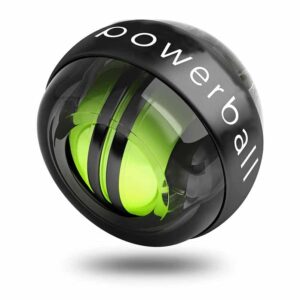
Powerball is a highly-effective tennis elbow exercise device that will help to rehabilitate and combat the condition fast. Pick up a Powerball today and experience the incredible benefits for yourself. Choose the perfect Powerball model for you in our online store – the Power® is in your hands.
STORETennis Elbow? Problem Solved.
“I got tennis elbow from constantly using my laptop and it was a major issue. It got so bad, I couldn’t lift a glass of water using my right arm, my elbow would just give way. I started some exercise to help strengthen and rebuild but it was hard going, causing me more injury at times.

I got really fed up with the pain and having a useless arm, especially since I am right handed, so I went searching online for something better and discovered Powerball®. I used it regularly and it really has given strength back and reduced my pain considerably, a fantastic outcome. It’s all taken only a few weeks so it’s a great result as I suffered for months before this.”
Michael Cutler, Bristol, UK

